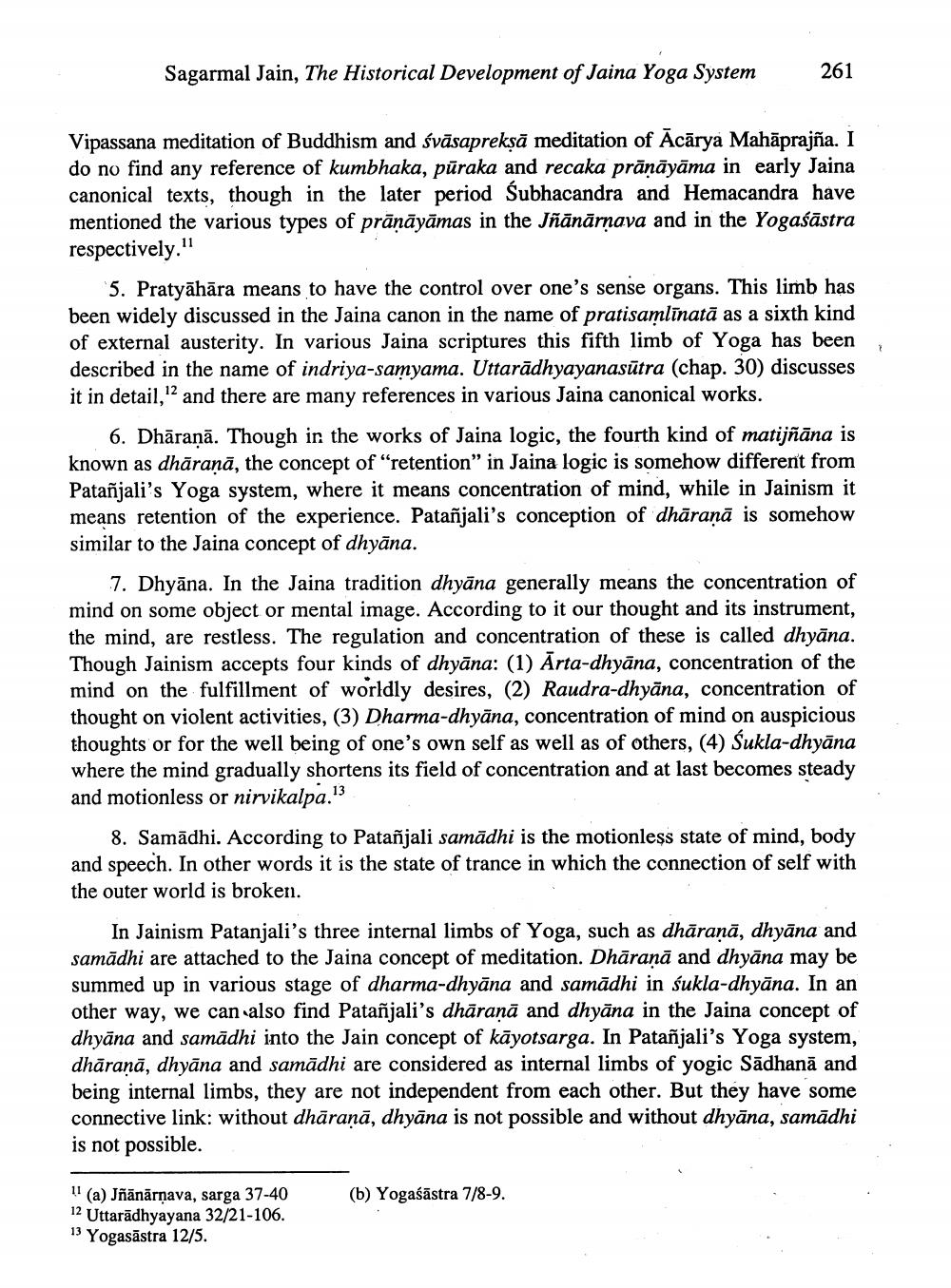________________
Sagarmal Jain, The Historical Development of Jaina Yoga System
261
Vipassana meditation of Buddhism and śvāsapreksā meditation of Ācārya Mahāprajña. I do no find any reference of kumbhaka, pūraka and recaka prānāyāma in early Jaina canonical texts, though in the later period śubhacandra and Hemacandra have mentioned the various types of prānāyāmas in the Jñānārnava and in the Yogaśāstra respectively."
5. Pratyāhāra means to have the control over one's sense organs. This limb has been widely discussed in the Jaina canon in the name of pratisamlīnatā as a sixth kind of external austerity. In various Jaina scriptures this fifth limb of Yoga has been described in the name of indriya-samyama. Uttarādhyayanasūtra (chap. 30) discusses it in detail," and there are many references in various Jaina canonical works.
6. Dhāranā. Though in the works of Jaina logic, the fourth kind of matijñāna is known as dhāraṇā, the concept of "retention” in Jaina logic is somehow different from Patañjali's Yoga system, where it means concentration of mind, while in Jainism it means retention of the experience. Patañjali's conception of dhāraṇā is somehow similar to the Jaina concept of dhyāna.
7. Dhyāna. In the Jaina tradition dhyāna generally means the concentration of mind on some object or mental image. According to it our thought and its instrument, the mind, are restless. The regulation and concentration of these is called dhyāna. Though Jainism accepts four kinds of dhyāna: (1) Ārta-dhyāna, concentration of the mind on the fulfillment of worldly desires, (2) Raudra-dhyāna, concentration of thought on violent activities, (3) Dharma-dhyāna, concentration of mind on auspicious thoughts or for the well being of one's own self as well as of others, (4) Sukla-dhyāna where the mind gradually shortens its field of concentration and at last becomes steady and motionless or nirvikalpa."
8. Samādhi. According to Patañjali samādhi is the motionless state of mind, body and speech. In other words it is the state of trance in which the connection of self with the outer world is broken.
In Jainism Patanjali's three internal limbs of Yoga, such as dhāraṇā, dhyāna and samādhi are attached to the Jaina concept of meditation. Dhāraņā and dhyāna may be summed up in various stage of dharma-dhyāna and samādhi in sukla-dhyāna. In an other way, we can also find Patañjali's dhāraņā and dhyāna in the Jaina concept of dhyāna and samādhi into the Jain concept of kāyotsarga. In Patañjali's Yoga system, dhāranā, dhyāna and samādhi are considered as internal limbs of yogic Sādhanā and being internal limbs, they are not independent from each other. But they have some connective link: without dhāranā, dhyāna is not possible and without dhyāna, samādhi is not possible.
(b) Yogaśāstra 7/8-9.
"(a) Jñānārņava, sarga 37-40 12 Uttarādhyayana 32/21-106. 13 Yogasāstra 12/5.




